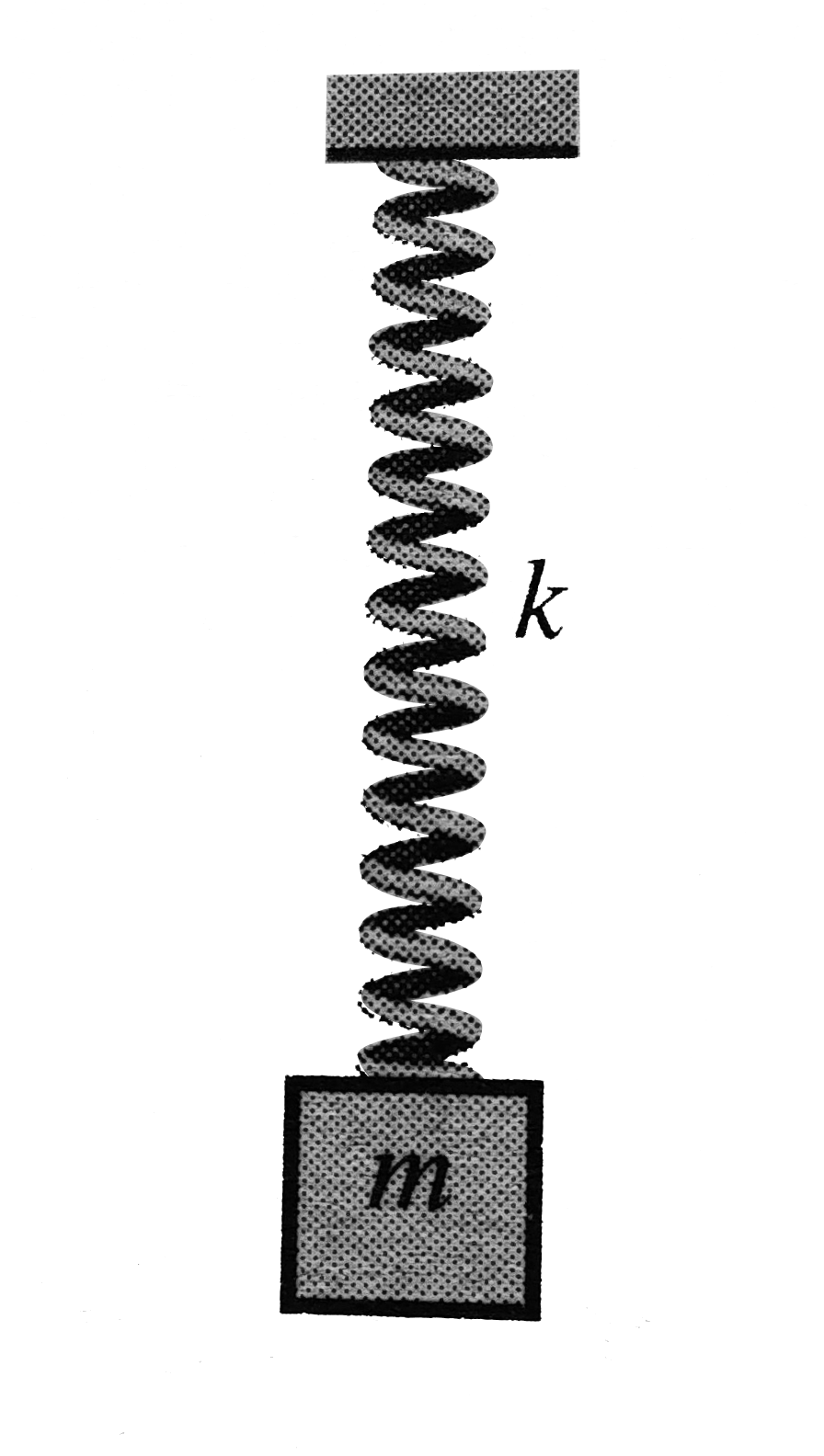A linear harmonic oscillator of force constant 2×106N/m and amplitude (0.01 m) has a total mechanical energy of (160 J). Its.
Maximum potential energy is 100 J
maximum kinetic energy is 100 J
maximum potential energy is 160 J
maximum potential energy is zero
The correct Answer is:B, C
To solve the problem of finding the maximum potential energy and maximum kinetic energy of a linear harmonic oscillator, we can follow these steps:
Step 1: Understand the Total Mechanical Energy
The total mechanical energy (E) in a simple harmonic oscillator is given as:
E=Maximum Potential Energy+Maximum Kinetic Energy
In this case, the total mechanical energy is provided as E=160J.
Step 2: Determine Maximum Potential Energy
At the extreme positions of the oscillator (maximum displacement), the kinetic energy is zero, and all the energy is potential. Thus, the maximum potential energy (U_max) is equal to the total mechanical energy:
Umax=E=160J
Step 3: Determine Maximum Kinetic Energy
At the mean position, the potential energy is zero, and all the energy is kinetic. Thus, the maximum kinetic energy (K_max) can also be calculated using the total mechanical energy:
Kmax=E−Umax
Since Umax=160J:
Kmax=160J−160J=0J
However, we can also calculate the maximum kinetic energy using the formula:
Kmax=12kA2
Where:
- k=2×106N/m (force constant)
- A=0.01m (amplitude)
Step 4: Calculate Maximum Kinetic Energy
Substituting the values into the formula:
Kmax=12×(2×106)×(0.01)2
Kmax=12×(2×106)×(1×10−4)
Kmax=12×200
Kmax=100J
Final Results
- Maximum Potential Energy Umax=160J
- Maximum Kinetic Energy Kmax=100J
Summary
- Maximum Potential Energy: 160 J
- Maximum Kinetic Energy: 100 J
The total mechanical energy (E) in a simple harmonic oscillator is given as:
E=Maximum Potential Energy+Maximum Kinetic Energy
In this case, the total mechanical energy is provided as E=160J.
At the extreme positions of the oscillator (maximum displacement), the kinetic energy is zero, and all the energy is potential. Thus, the maximum potential energy (U_max) is equal to the total mechanical energy:
Umax=E=160J
At the mean position, the potential energy is zero, and all the energy is kinetic. Thus, the maximum kinetic energy (K_max) can also be calculated using the total mechanical energy:
Kmax=E−Umax
Since Umax=160J:
Kmax=160J−160J=0J
Kmax=12kA2
Where:
- k=2×106N/m (force constant)
- A=0.01m (amplitude)
Substituting the values into the formula:
Kmax=12×(2×106)×(0.01)2
Kmax=12×(2×106)×(1×10−4)
Kmax=12×200
Kmax=100J
- Maximum Potential Energy Umax=160J
- Maximum Kinetic Energy Kmax=100J
- Maximum Potential Energy: 160 J
- Maximum Kinetic Energy: 100 J
Topper's Solved these Questions
- SIMPLE HARMONIC MOTIONBOOK - DC PANDEY ENGLISHCHAPTER - SIMPLE HARMONIC MOTIONEXERCISE - Comprehension types
18 Videos
- SIMPLE HARMONIC MOTIONBOOK - DC PANDEY ENGLISHCHAPTER - SIMPLE HARMONIC MOTIONEXERCISE - Matrix matching type questions
13 Videos
- SIMPLE HARMONIC MOTIONBOOK - DC PANDEY ENGLISHCHAPTER - SIMPLE HARMONIC MOTIONEXERCISE - JEE Advanced
34 Videos
- SEMICONDUCTORS AND ELECTRONIC DEVICESBOOK - DC PANDEY ENGLISHCHAPTER - SEMICONDUCTORS AND ELECTRONIC DEVICESEXERCISE - More than One Option is Correct
3 Videos
- SOLVD PAPERS 2017 NEET, AIIMS & JIPMERBOOK - DC PANDEY ENGLISHCHAPTER - SOLVD PAPERS 2017 NEET, AIIMS & JIPMEREXERCISE - Solved paper 2018(JIPMER)
38 Videos
Similar Questions
Knowledge Check
A simple harmonic oscillator has a frequency of 2.5 Hz and an amplitude of 0.05m. What is the period of the oscillations?
A0.4sB0.2sC8sD20s
A harmonic oscillation of force constant 4×106Nm−1 and amplitude 0.01 m has total energy 240 J. What is maximum kinetic energy and minimum potential energy?
View Solution
For the spring pendulum shown in fig. the value of spring constant is 3×104Nm and amplitude of oscillation is 0.1m. The total mechanical energy of oscillating system is 200 J. Mark out the correct option (s).
View SolutionPassage I) In simple harmonic motion force acting on a particle is given as F=−4x, total mechanical energy of the particle is 10 J and amplitude of oscillations is 2m, At time t=0 acceleration of the particle is −16ms2. Mass of the particle is 0.5 kg.
At x=+1m, potential energy and kinetic energy of the particle are
View SolutionPassage I) In simple harmonic motion force acting on a particle is given as F=−4x, total mechanical energy of the particle is 10 J and amplitude of oscillations is 2m, At time t=0 acceleration of the particle is −16ms2. Mass of the particle is 0.5 kg.
Potential energy of the particle at mean position is
View SolutionPassage I) In simple harmonic motion force acting on a particle is given as F=−4x, total mechanical energy of the particle is 10 J and amplitude of oscillations is 2m, At time t=0 acceleration of the particle is −16ms2. Mass of the particle is 0.5 kg.
Displacement time equation equation of the particle is
View SolutionA particle of mass 40 g executes a simple harmonic motion of amplitude 2.0 cm. If the time period is 0.20 s, find the total mechanical energy of the system.
View SolutionA particle of mass 40 g executes a simple harmonic motion of amplitude 2.0 cm. If the time period is 0.20 s, find the total mechanical energy of the system.
View Solution
